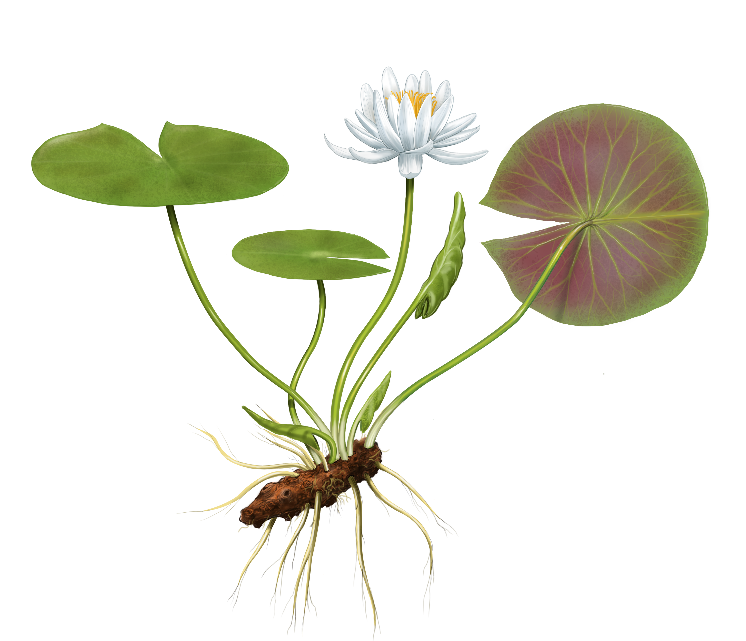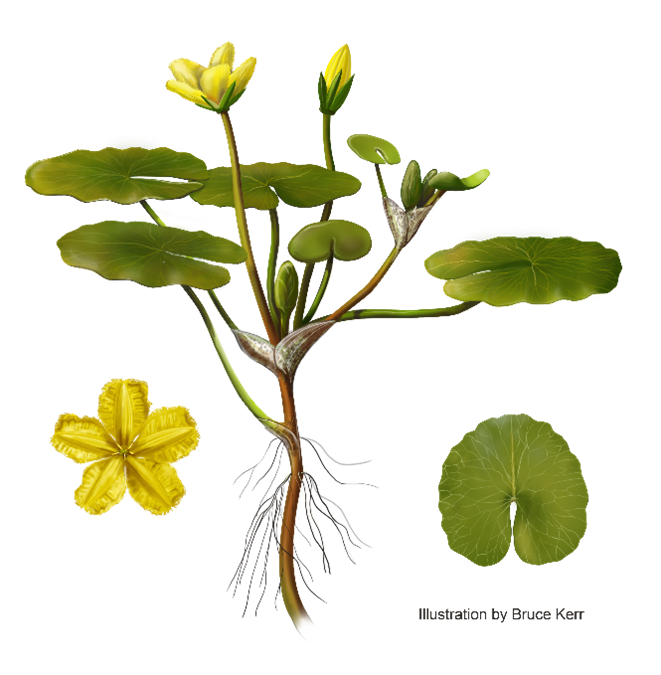Invasive yellow floating heart: A previously popular water garden plant causes problems in Michigan’s lakes and ponds
The invasive yellow floating heart was once common in water gardens across Michigan, but has been a prohibited plant in Michigan for over a decade.

The invasive yellow floating heart (Nymphoides peltata) was once common in water gardens across Michigan. However, for over a decade, yellow floating heart has been a prohibited plant in Michigan as part of Michigan’s Natural Resources Environmental Protection Act (Part 413 of Act 451). This means it is unlawful to possess, introduce, import, or sell yellow floating heart in Michigan. Yellow floating heart is also included in Michigan’s Aquatic Invasive Species Watch List, which identifies invasive species that present an immediate and significant threat to Michigan’s economy, environment, or human health.
Although yellow floating heart may seem appealing for water gardens with its beautiful yellow flowers and floating leaves, it has the ability to produce dense mats of floating leaves that can cover large areas of shallow water. These mats can hinder recreation, impact fish and wildlife habitat, and reduce light conditions for beneficial native aquatic plants. Yellow floating heart can also reproduce by seeds and fragments, which increases the risk of spread to other waterbodies.
Water gardeners should instead prioritize using native plants for water gardens and landscaping. A good replacement for yellow floating heart is the Michigan native, white water lily (Nymphaea odorata).

Since being added to Michigan’s Watch List, the Michigan Department of Environment, Great Lakes, and Energy (EGLE) has been on the lookout for yellow floating heart. Sometimes professionals will find and report the species to EGLE and sometimes informed landowners will report it. In either case, EGLE responds to the report and may control and manage the infestation with a goal to reduce the spread to other waterbodies and eventually eradicate the infestation.
Since 2016, yellow floating heart has been found in 12 locations across the state. It often takes multiple years of treatment (herbicide and hand removal) followed by 3 years of monitoring to deem a location eradicated. To date 3 locations have been eradicated while several other locations are nearing that level.
How to identify yellow floating heart
Yellow floating heart is a rooted aquatic plant with floating leaves that are heart-shaped to almost round. The edges of the floating leaves are scalloped and look wavy. It is often identified by its distinctive, yellow flower with five fringed petals. The leaves are very similar to the native Michigan white and yellow water lilies, but both of those plants do not have wavy/scalloped edges.

To identify yellow floating heart, look for:
- Rooted aquatic plant with floating leaves that are scalloped or wavy (leaves 1 - 4.5 inches in diameter)
- Bright yellow flower with 5 fringed petals (0.75 – 1.5 inches in diameter)
What should you do if you find yellow floating heart?
If you suspect you have found yellow floating heart, please report to:
- EGLE-WRD-AIP@Michigan.gov
- Or - use the Midwest Invasive Species Information Network (MISIN) online reporting tool
- Or - download the MISIN smartphone app and report from your phone - MSU.edu/tools/apps/#home
Learn more
To learn more about aquatic invasive species in water gardens and aquariums, visit Michigan State University Extension’s Reduce Invasive Pet and Plant Escapes (RIPPLE) website.
To learn more about yellow floating heart, visit the fact page on the State of Michigan Invasive Species website.



 Print
Print Email
Email

